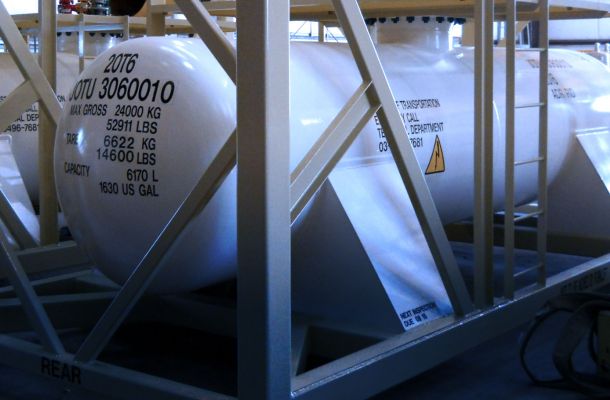SBA SOP Updates: What Do They Mean For You?

First Financial Bank
Small Business Administration (SBA) loans help launch many small businesses every year. So what does it mean to you when there are changes to their Standard Operating Procedures (SOP)?
SBA-backed loans are provided through preferred lenders, like First Financial Bank. Thanks to the SBA’s policies and procedures, the risk to lenders is reduced and loans are more readily available to fund small businesses. These “Standard Operating Procedures” or SOPs are publicly available but are written and intended for lending professionals. Yet as a prospective or current small business owner, it’s important to understand how they affect you, especially when the SBA changes or updates the SOPs.
The most recent changes are focused on streamlining processes, enhancing accessibility, and better serving the needs of small business owners through better SBA loan acquisition terms.
Requirements for Equity Injections
Small business loans often require equity injections to secure financing, whether for business acquisitions, startup capital, or expansion. What are “equity injections”? These are commitments of dollars or other assets that the business owner is investing in the business. The SBA’s revised guidelines aim to provide more clarity and flexibility regarding the sources and structure of equity injections. By offering clearer guidelines, the SBA enables entrepreneurs to navigate the financing process more effectively. This includes allowing a wider range of acceptable equity sources, such as personal savings, contributions from partners, or investments from third-party investors.
The SBA changed the conditions for a Seller Note to be considered part of the Buyer Equity Injection (aka: your down payment). Under the earlier guidelines, the seller note must be on full standby (no principal or interest payments) until the SBA Loan is paid in full. In other words, if a seller held a note on loan, they could only be paid back after the SBA loan was completely paid off. Now, if the business can afford the payments, the seller is allowed to be repaid after 24 months plus can receive interest-only payments during the first 24 months. This allows a borrower the opportunity to ask a seller to assist them in purchasing a business without requiring the seller to wait up to 10 years to be repaid.
Additionally, the requirements for verifying equity injections are now more flexible. Lenders are no longer restricted to only the SBA approach for verification. The lender can now apply the policies they have established for non-SBA commercial loans of a similar size. This reduces the amount of documentation that lenders must collect to verify equity on 7(a) loans.
Facilitating Partial Buy-Ins
Partnerships are integral to the growth and success of many small businesses, but navigating partner buy-ins can be complex. The SBA has introduced streamlined procedures to help facilitate partner buy-ins, making it easier for businesses to bring in new partners or buy out existing ones.
Under the updated regulations, buyers can now acquire less than 100% ownership of the business, known as a Partial Buy-In. Previously, sellers were only allowed to remain actively involved in the business operations for 12-month consulting periods after the business was sold. Now, sellers can remain engaged beyond that first year if they retain some ownership in the business.
This change is particularly beneficial for those business owners who are seeking to transition companies with specialized licenses or intellectual property that may be difficult to transfer to the new owners at the time of sale. Additionally, if the seller plans to stay with the company long-term, their salary and benefits will no longer be treated as add-backs when calculating business discretionary cash flow. Based on the percentage of ownership, the remaining owner may also need to guarantee the loan.

SBA Guarantee Fee Adjustments
Guarantee fees play a crucial role in SBA-backed loans, impacting both borrowers and lenders. In an effort to enhance affordability and accessibility, the SBA has adjusted guarantee fees for its loan programs beginning October 1, 2024. This new fee structure is especially good news for borrowers with loan requests up to $1,000,000. The following is a summary of the updated fees:
- For loans of $1,000,000 or less: 0.00%
- For loans of $1,000,001 and greater: 3.50% of the guaranteed portion of the loan up to and including $1,000,000, plus 3.75% of the guaranteed portion of the loan over $1,000,000
Increased Maximum Loan Amounts
The Small Business Administration (SBA) has increased the maximum loan amount for its small loan product from $350,000 to $500,000. Loans that fall into this category are eligible for expedited and streamlined processing. This change is intended to disperse small business financing across a wider pool of applicants while making it easier and faster to obtain funds.
As a result of the changes, if you’ve previously been approved for an SBA 7(a) loan of
$350,000, you could qualify for an additional loan with the same streamlined application previously only available for smaller loans.
Check out this article to learn more about guarantees and collateral for SBA loans.
The Specific Impact On Your Business
As an SBA Preferred Lender, we’re here to help you understand these changes and how they could impact your business. With First Financial Bank, you get loan officers who understand your business and how to navigate the process for the loan you need.




